On a Thursday morning in early May, Amy Stewart-Banbury squeezes a dollop of ultrasound gel onto Brandi Hardin’s belly. Then she settles a plastic microphone in the goop and starts gingerly moving it around. Brandi is pregnant, and Stewart-Banbury is using a special device called a fetal doppler to listen to the baby’s heartbeat.
At first, the only sound is the steady roar of the arteries in Brandi’s uterus. Stewart-Banbury concentrates and moves the microphone a little lower. Then, suddenly, there it is, a rhythmic, underwater whooshing noise: ba-bow ba-bow ba-bow. When she hears it, Brandi’s face lights up.
“Hey, baby,” she says, looking down at the bump in her belly. “Hey, sweetie!”
The sound is Laluna March Hardin. At 34 weeks in utero, she weighs 4.5 lbs. — about the same as a cantaloupe — and her fingernails will have just grown out to the ends of her tiny fingers.
Laluna is special for a number of reasons, not the least of which is that her parents, Brandi and Scott, have decided to give birth at home. For the past six months, they’ve been preparing for that moment — doing things like labs and ultrasounds, consultations and home visits — with Stewart-Banbury, their midwife.
“I figure, you know, birth is a part of life,” says Brandi, 38. “It was something I wanted to experience without being drugged out or scared.”
Brandi owns Esthetiques, a skin spa on Brookhaven Circle. She says Laluna was conceived on a trip to New York, where Brandi was administering special skin treatments to runway models as a part of New York Fashion Week.
“So clearly,” she enthuses, “Laluna is going to be a girly girl.”
Scott Hardin, 34, is a record producer. He and Brandi met while he was taking out the trash at his old job, just down the street from Esthetiques. He says he was initially skeptical about the whole midwifery thing.
“I didn’t say no,” recalls Scott. “But like a lot of people around here, I think I had some questions about it.”
Of the more than 60,000 babies born in Shelby County this year, fewer than 150 will be born at home with a midwife instead of in a hospital. Families choose home birth for any number of reasons including the possibilty of fewer medical interventions — things such as epidural analgesia and caesarean sections.
The World Health Organization states that in a healthy population, C-section rates should never exceed 14 percent. In 2012, the U.S. rate was 32.8 percent. That’s worrisome, because recent research has shown that, perhaps due to not being exposed to helpful bacteria found in the mother’s vagina, babies born by C-section are more likely to experience health problems such as allergies and obesity later in life.
Brandi has a more personal reason for wanting to have her baby at home. Since the age of 35, she has struggled with catamenial epilepsy, a seizure disorder linked to her hormones. It causes her blood pressure to drop to abnormally low levels, resulting in grand mal or localized seizures.
“If I hadn’t had this experience,” explains Brandi, “I don’t think I would be trying for a home birth. But now I know what it’s like to be pumped full of medications in a hospital, and I just don’t want that for my baby.”
“To the doctors,” she continues, “I was just a patient, a chart, a number. But with Amy, it’s different. To her I am a person.”
Typically, the risk factors associated with Brandi’s condition would have made her ineligible for a home birth, but Stewart-Banbury and Brandi’s primary care doctor began collaborating early on in the pregnancy. Together they determined that if Brandi could keep her blood pressure within certain healthy limits, then she could attempt to give birth at home.
“As a midwife,” says Stewart-Banbury, “my first priority is not a home birth; it’s a safe birth. So if I see that something isn’t going right, I won’t hesitate to transfer to a hospital.”
Today, 99 out of every 100 American babies are born in a hospital — but it wasn’t always that way. For most of the country’s history, home birth was the norm. In 1900, virtually all American babies were born at home, and half of them were assisted by midwives.
Then medical science came along and claimed childbirth for itself. Beginning in the early 1900s, doctors — the vast majority of whom were men — portrayed midwives as dirty, illiterate, and ignorant, and persuaded women that birth was a medical procedure best handled by physicians in the context of a hospital.
By 1940, the percentage of women opting for out-of-hospital births had dropped to 44 percent. By 1960, it had dropped to 1 percent, where it has remained ever since. In some states, home-birth midwifery is actually illegal.
But lately the practice has been experiencing a bit of a comeback. According to data from the Centers for Disease Control, the number of home births increased by 29 percent between 2004 and 2009, the last year for which detailed data is available. Each year in the U.S. about 30,000 babies are born at home.
Stewart-Banbury, now 39, was born into a traditional, Catholic family at Baptist Memorial Hospital in East Memphis. She says she first heard about the modern practice of midwifery in 1995 from her then-boyfriend, Scott.
“Scott and I were on one of our very first dates,” Stewart-Banbury remembers. “We were driving down Poplar in his Volkswagen van, and all of a sudden he just turns to me and says, ‘When my woman has a baby, she’ll be using a midwife.'”
“I remember thinking,” she continues, “that this guy was the biggest asshole I’d ever met. One, I couldn’t believe he would refer to her as ‘his woman.’ Two, I couldn’t believe he would presume to dictate where and how she would have her baby.”
Four years later, they were married.
That day also marked the beginning of Stewart-Banbury’s slow march toward midwifery. She says that after her conversation with Scott, she couldn’t get the idea out of her head. Her fascination was only reinforced by listening to stories of her friends’ births.
“I would go visit them,” Stewart-Banbury recalls, “and they would say things like, ‘It was horrible. I was so scared. I’ve never been so embarrassed in my life.’ And I remember thinking, this is sad. My friends should have been happy to be having a baby, but instead they were frightened and humiliated.”
“Meanwhile,” she continues, “Scott’s friends were having their babies at home. We would bring them dinner, and these women would say things like, ‘This is the best thing that has ever happened to me. It was so much fun! If I could do it again tomorrow, I would.'”
At the time, there was just one midwifery service in Memphis. Stewart-Banbury apprenticed there in 1999; five years later she was licensed as a midwife by the state of Tennessee. In the meantime, she had two children of her own, both born at home.
Today, Stewart-Banbury is a Certified Professional Midwife (CPM), meaning she has completed a three-year course of study, along with an apprenticeship, and has passed a certification test given by the North American Registry of Midwives. Since starting her own practice in 2004, she has attended 296 home births, at the rate of about 30 per year. She says her busiest months are June and July.
“I think the main difference between home birth and hospital birth,” says Stewart-Banbury, “is the absence of fear. When women are at home, they are not afraid. You are a guest in their house, and they have supreme authority.”
Is it safe to have your baby at home? That depends on whom you ask. There are a lot of numbers out there, and unsurprisingly, emotions tend to run high around this issue.
The data most often cited by opponents of home birth comes from what’s become known as the Wax paper, published in 2010 in The American Journal of Obstetrics and Gynecology. The paper — a meta-analysis of 12 studies — found that babies born at home were about twice as likely as those born in hospitals to die in their first 28 days of life. Home birth, the paper suggests, results in a neonatal death rate of about 2 per thousand, whereas the rate for hospitals is just 0.9 per thousand.
But many in the medical community have criticized the Wax paper for what they say is a faulty statistical methodology. Critics argue that there was no logical basis for which studies were included in — and which excluded from — the paper’s meta-analysis. They also contend that some of the studies cited include unplanned as well as planned home births, rendering the paper’s conclusions mostly meaningless.
Proponents of home birth cite studies from the World Health Organization and the Journal of Midwifery and Women’s Health, both of which find home births to be at least as safe — and in some cases, safer — than hospital births. They also tout benefits like higher birth weights and better APGAR scores.
What becomes clear, as one wades through the literature on this issue, is that more and better research is needed. What’s also clear is that, at least for now, both hospital and home births result in a small number of infant deaths. It’s a grim fact that Stewart-Banbury takes very seriously.
“Unfortunately,” says Stewart-Banbury, “I can’t guarantee a safe birth. Even when babies are born in the hospital, hospitals can’t guarantee a safe birth. What I can do is give the assurance that I will listen to your baby, and I will use all the tools and all the experience I have to make your birth as safe as possible.”
I have to confess that going into this story, I was pretty naïve about childbirth. As a 29-year-old single man, it just wasn’t really on my radar. To give you some idea, when I learned the baby’s due date, I marked it in my planner like this: “June 10th – baby born.”
Apparently Laluna didn’t get the memo. She nearly joined us at the end of May, when Brandi suddenly started having contractions — a practice run, as it turned out. June 10th came and went.
Brandi and Scott felt sure that Laluna, whose name means “the moon,” would make her debut on Friday the 13th, when the moon was full — but no dice. Laluna, they realized, was doing this thing on her own schedule.
When I finally got the call, it was
8 a.m. on June 17th.
“John, I think you should come on over,” Stewart-Banbury said. “This baby is definitely coming today. She might even be here before lunch.”
Previously, Stewart-Banbury had warned me that when this call came, I should drop what I was doing and get in the car. Brandi, she explained, has been doing pilates for most of her adult life, and women who do pilates tend to shoot their babies out like BBs.
I didn’t need to be told twice. When I got to the house, things were pretty far along. The middle of the Hardins’ living room was now taken up with an inflatable birthing tub. At five feet in diameter, it was like a kiddie pool with a sterile plastic lining.
In the middle of the tub, in about two feet of warm water, was Brandi. She’d been having contractions since midnight, and at that point they were coming four minutes apart. Just as I walked in, a contraction hit, and Brandi made a sound like a horse’s whinny.
“All right,” Stewart-Banbury said, “that was good, but next time I want you to make a lower sound. When you get your voice up high, it pulls the baby back up, and we don’t want that.”
Stewart-Banbury had brought along her two apprentices. Also in the room were me, the photographer, and Scott Hardin, who crouched alongside the tub and held Brandi’s hand. The two of them didn’t say much, but it was clear from the way Brandi held on that she was getting a lot of strength through that hand.
Over the next hour, we waited while Laluna descended through Brandi’s pelvis. Stewart-Banbury checked Brandi’s blood pressure, which looked good: 110/76. So did Laluna’s heartbeat. Meanwhile Brooke Prudhomme, one of the apprentices, applied pressure to Brandi’s lower back to ease her pain, which was considerable. Then it was time to push.
“I can’t do it,” said Brandi, clenching her teeth.
“Yes you can,” answered Stewart-Banbury, her voice firm and reassuring. “You are so much stronger than you think you are.”
Brandi was kneeling in the water, with her elbows on the side of the tub. Previously she had been making a lot of noise, but now the room became strangely quiet. Brandi hissed and grunted while Stewart-Banbury quietly coached her.
And then, all of a sudden, there was a baby. It happened so fast, it hardly seemed real. One moment there were seven people in the room — the next, eight. Prudhomme pulled the pale infant out of the water and put her in Brandi’s arms.
“Hey baby,” Brandi gasped, ecstatic and exhausted, “What do you think? It’s a lot brighter out here, huh?”
Laluna March Hardin was born at 9:52 a.m. on Tuesday, June 17th. She measured 18 inches long and weighed
6 lbs. 10 oz. I’m no baby expert, but Laluna is an exceptionally beautiful baby, with a distinguished chin and an important-looking nose.
Over the next few minutes, Stewart-Banbury and her apprentices cleaned and examined Laluna, checking for good bowel sounds and the Babinski reflex. Everything looked good. Within 20 minutes of being born, Laluna was clean and dry, safe and warm, resting with her parents in their own bed — in their own home.
“I don’t even know how I feel right now,” confessed Scott, looking down at the baby, “It’s like, wow, you know? I guess I’m still not used to her being here.”
Stewart-Banbury is the first to admit that home birth isn’t for everyone. Women with certain risk factors — things like diabetes and thyroid disease — should almost certainly give birth in a hospital. The same applies to women who are fearful of childbirth, or who simply would feel more comfortable in a clinical environment.
But for those women for whom it is safe and who want it, Stewart-Banbury says home birth can be a truly life-changing experience.
“If you can push a baby out at home,” she says, “you can do anything. And I love helping women realize that. I love helping them empower themselves.”
Brandi and Scott Hardin seem to agree. When I visited them a few days after the birth, they were spending some quiet time with Laluna, who was napping in an adorable pineapple onesie. Given the chance, I ask, would they have done anything differently?
They don’t even have to think about it. They both have the same answer — a single word: “no.”
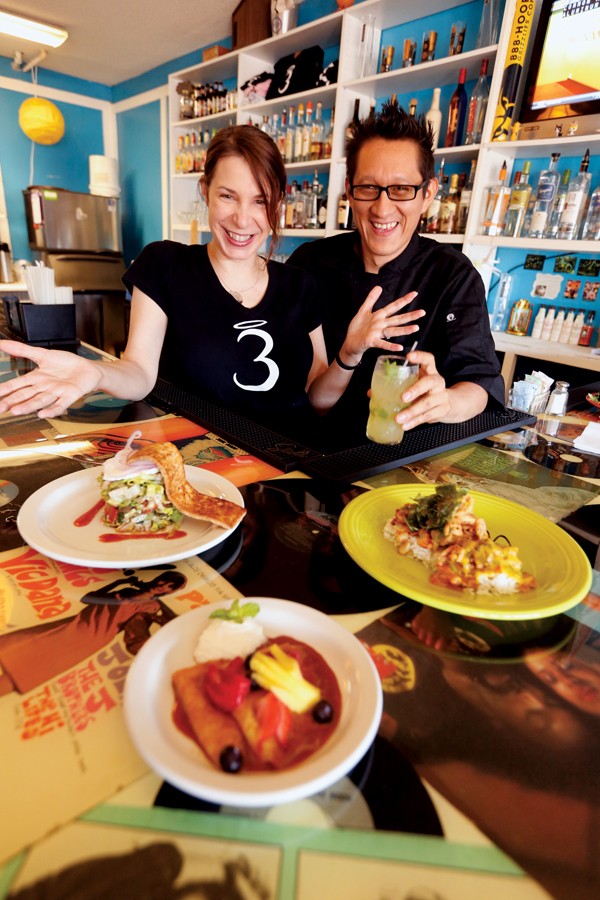 Justin Fox Burks
Justin Fox Burks 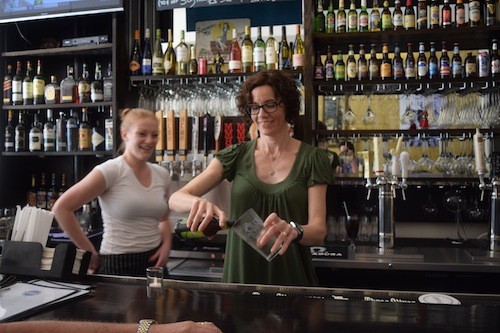
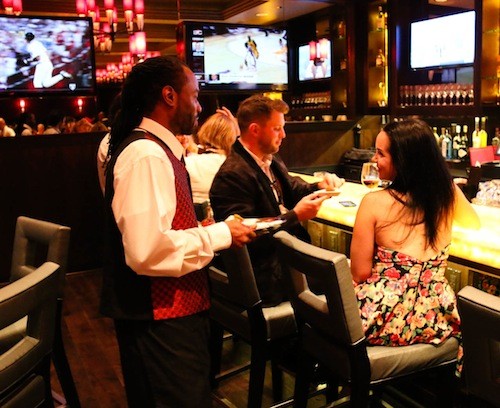
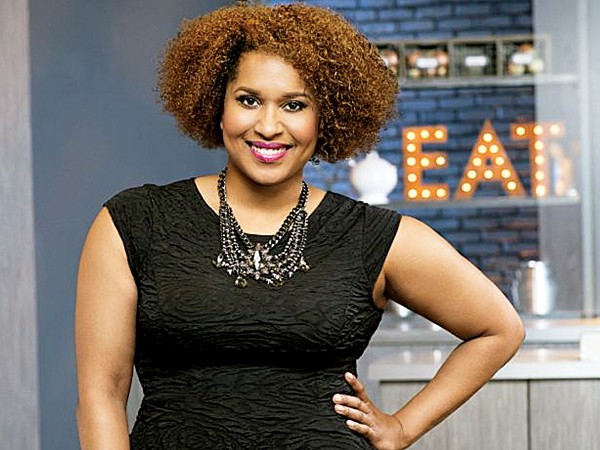

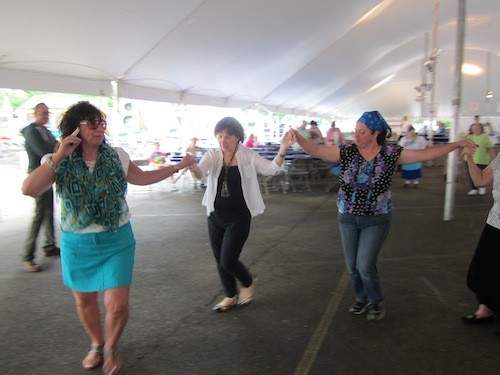
 Justin Fox Burks
Justin Fox Burks 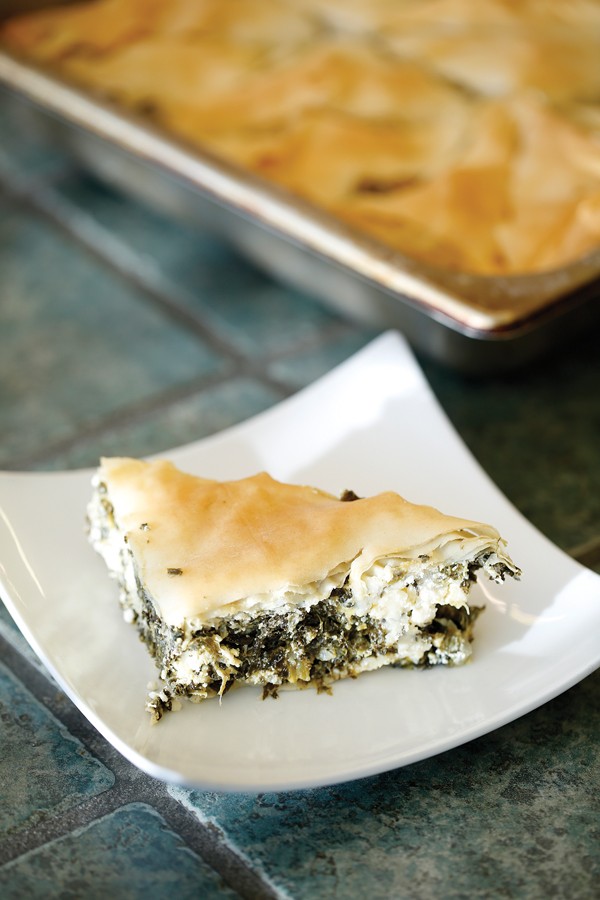 Justin Fox Burks
Justin Fox Burks 